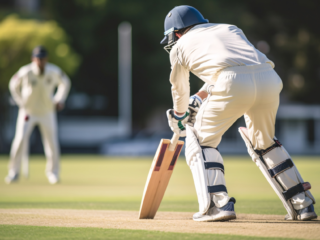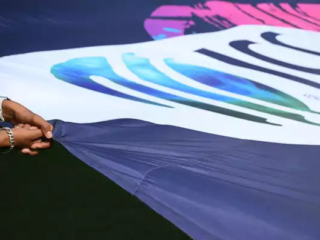
Packaging plays a critical role in maintaining the safety, quality, and integrity of countless products. From the food industry to pharmaceuticals, the need for effective packaging is vital to prevent contamination, preserve contents, and deliver products as intended to consumers. At the center of this process lies seal inspection—a key step that ensures the integrity of packaging and safeguards the products within it.
Seal inspection is particularly indispensable for products packaged in controlled environments, such as those sealed with gas mixtures, to ensure sterility and protection. Whether dealing with fresh food items or sensitive pharmaceuticals, the seal acts as a protective barrier, preventing unwanted breaches that could compromise quality and safety. For businesses prioritizing customer satisfaction and regulatory compliance, seal inspection stands out as a technology of utmost importance.
Why Seal Integrity Matters
Seal integrity is more than just a practical concern; it directly affects not only the longevity of products but also public health and trust in various industries. When packaging seals are compromised, the consequences can be significant.
In the food industry, ensuring the seal is intact means that products can retain their original appearance, nutritional content, and taste over the intended shelf life. Airtight seals prevent external substances, such as bacteria or moisture, from entering and contaminating goods. This preservation is especially critical for perishable items where quality can plummet rapidly once exposed to unfavorable conditions.
Meanwhile, in the pharmaceutical universe, packaging goes beyond ensuring optimal product performance. Seals prevent contamination that could alter the chemical structure of medicines or expose potentially life-saving treatments to risks. Adequate seal integrity also ensures that drugs maintain their intended potency and effectiveness, which is crucial for consumer safety and adherence to regulatory standards.
When issues in seal integrity crop up, the impact is twofold. Businesses risk losing the trust of consumers, who expect products to arrive in pristine condition. Additionally, regulatory penalties and recalls can deal with financial blows that are difficult to recover from.
The Role Of Vision-Based Solutions In Seal Inspection
The use of advanced technologies, like vision-based solutions, has transformed the process of seal inspection into a more streamlined and accurate endeavor. These innovative systems utilize optical sensors and algorithms to validate package seals with unmatched efficiency and precision. By harnessing intelligent vision systems, businesses can inspect seals for even the tiniest anomalies that would otherwise go unnoticed in manual inspections.

Vision-based technologies rely on high-resolution imaging, which can detect minuscule defects such as pinholes, tiny cracks, or folds that might compromise the seal. Algorithms evaluate the captured images to determine whether the packaging meets strict quality standards. Irregularities are flagged, allowing for immediate corrective measures and ensuring that faulty seals do not make it past quality control processes.
This method is particularly appealing due to its speed and automation. Unlike traditional inspection methods, vision-based solutions reduce human error and increase throughput, which is particularly valuable in fast-moving industries like food production or pharmaceutical packaging. With ongoing advancements in equipment and software, vision technology for seal inspection continues to evolve, promising even greater efficiencies for businesses committed to quality assurance.
How Seal Inspection Enhances Product Safety
Seal inspection is a proactive measure that protects products from multiple threats. From preventing contamination to maintaining shelf stability, its contributions to safety and quality are indispensable.
For food products, properly inspected seals ensure that items retain their nutritional value and intended flavor profile while maintaining an appealing presentation for consumers. Examples include vacuum-sealed goods and modified-atmosphere packaging, which heavily rely on seal integrity to function as designed. Without inspection, even a tiny flaw might disrupt the packaging’s purpose, leading to spoilage or waste.
Pharmaceuticals benefit from seal inspection in equally critical ways. Whether the product is liquid, powder, or tablet-based, any compromise in packaging can have severe implications for patient health. Improper sealing might lead to exposure to humidity, airborne contaminants, or foreign particles that could degrade the product or render it unsafe. Seal inspection upholds safety standards by ensuring that product quality remains intact from production facilities to consumers’ hands.
Beyond the immediate product-level benefits, consistent and rigorous seal inspection also contributes to building consumer confidence. A sealed product serves as a visible guarantee of professionalism, care, and compliance with industry standards. Businesses that prioritize seal integrity send a clear message about their commitment to safety and quality, strengthening customer loyalty over time.
Future Trends In Seal Inspection
The world of seal inspection is continuously advancing, shaped by emerging technologies designed to address more complex quality assurance demands. AI-driven systems are at the forefront of these developments, allowing for even greater precision and adaptability. Machine learning algorithms can analyze enormous datasets to predict and detect patterns that might lead to seal failures, effectively preventing issues before they occur.
Another rising trend involves hybrid systems that combine vision-based technology with thermal imaging. This dual approach adds another layer of accuracy by detecting temperature inconsistencies around seals, which could indicate compromise during sealing processes.

Regulatory compliance will also continue to influence the growth of seal inspection technologies. Global markets are introducing stricter packaging and labeling requirements, particularly in sectors like pharmaceuticals and food production. Advanced seal inspection technologies will, therefore, be key for businesses aiming to remain ahead of compliance challenges.
Sustainability is another focal point likely to influence seal inspection in the future. Eco-friendly materials are becoming more common in packaging, which may introduce new challenges for maintaining seal integrity. Vision-based systems and other inspection tools will adapt to address these changing dynamics.
Empower Every Package With Proper Seal Inspection
Seal inspection emerges as an essential part of ensuring that products are not only safe but also reach consumers in their intended form. From airtight food packaging to secure pharmaceutical seals, its role is critical in securing both trust and regulatory compliance. The integration of sophisticated tools like vision-based systems has further revolutionized seal inspections, delivering unmatched precision and efficiency for industries reliant on airtight packaging.
By keeping up with technological advancements and prioritizing this vital quality control step, businesses can stay ahead of compliance and offer consumers a better, safer product experience. With seal inspection at the core of quality control processes, the future of airtight packaging looks more reliable than ever.












